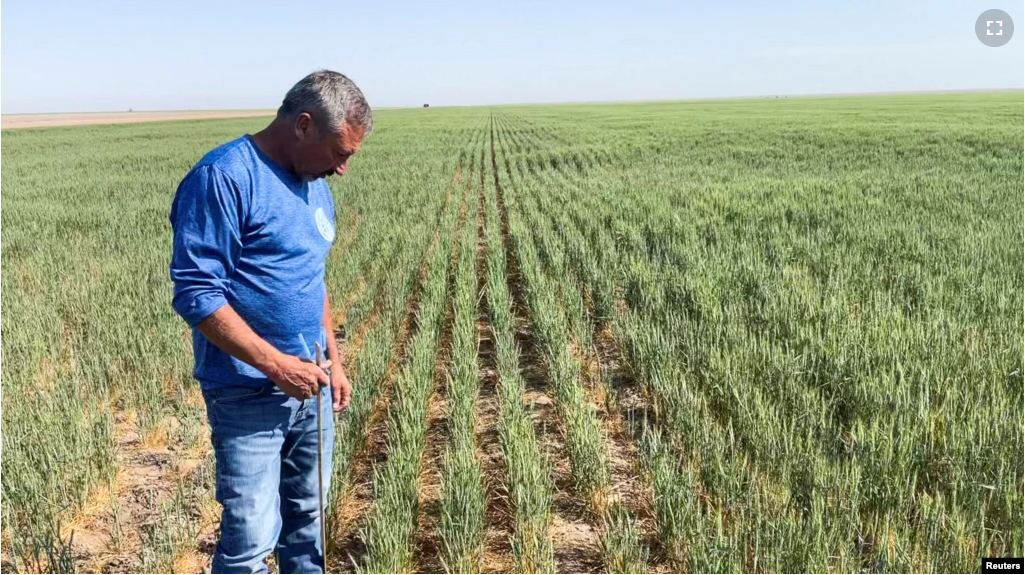American farmers are having crop production problems at a time when many countries are facing a food crisis.
The United States is the world’s fourth-largest wheat exporter.
Russia’s invasion of Ukraine in February stopped shipments of nearly a third of the world’s wheat exports. Little has gone right for wheat supplies since then.
Concerns about food supplies have increased because of worsening harvest possibilities in China and parts of Europe. In addition to that, major producer India has banned wheat exports because of a bad spring harvest there.
The United Nations has warned the effect of the war on grains, oils, fuel and fertilizer could result in hunger for millions of people.
Drought in some areas; wet conditions in others
The U.S. government has been calling on American farmers to plant more winter wheat this autumn. The government said it also would permit planting on some environmentally sensitive land beginning this autumn. But a drought and costly farm materials could limit production gains, grain experts say.
There are two wheat crops in the United States: spring wheat and winter wheat. Both are in trouble.
In the southern U.S. Plains, winter wheat farmers have received very little rain and are concerned about the size of their harvest.
Kansas farmers may not harvest thousands of hectares of wheat in fields this year because of drought damage.
Extremely wet spring weather in the northern U.S. Plains will also likely reduce crop production this year.
In North Dakota, a big April storm left the state’s large fields under more than 1 meter of snow in some areas, causing floods as the snow melted.
The U.S. Department of Agriculture says farmers have only planted 49 percent of planned spring wheat as of May 22.
North Dakota produces about half of the U.S. spring wheat. There, growers have planted just 27 percent of their crop, the second lowest amount in around 40 years.
“Some farmers have not turned a wheel yet,” said North Dakota Agriculture Commissioner Doug Goehring. He added that if farmers are not able to plant a lot of crops quickly, the effects on the world market could be bad.
Giving up on the harvest?
A private group visiting wheat fields in Kansas in mid-May predicted more fields than normal might go unharvested because of drought damage.
About six percent of the state’s planted hectares would be abandoned, the latest USDA estimates suggest. But given the drought damage, Kansas State University wheat expert Romulo Lollato thinks the abandonment rate could be higher.
In neighboring Colorado, abandonment could top 30 percent, Colorado Wheat Executive Director Brad Erker told tour participants.
“Wheat yields are affected by weather in May, and we’ve had a really dry May,” said Kansas farmer Vance Ehmke.
Corn and soybeans
U.S. wheat production has been decreasing because farmers have been planting more corn and soybeans. These crops can produce more profit. Seed science also has increased yields by 30 percent or more since 2000. Wheat’s yield has increased only six percent.
As the planting period in the northern Plains narrows, North Dakota farmers are considering other plans. These include changing to soybeans, which can be planted later in the spring. Another possibility is to fill out documents for crop insurance claims to limit farm losses.
“It’s pretty tempting to file those claims,” North Dakota farmer Dwight Grotberg said. “Once you get into June, you might be lucky to get half a crop. And with costs as high as they are, that’s hard to stomach.”
I’m John Russell.
Karl Plume reported on this story for Reuters. John Russell adapted it for VOA Learning English.
____________________________________________________________________
Words in This Story
fertilizer – n. a substance (such as manure or a special chemical) that is added to soil to help the growth of plants
drought – n. a long period of time during which there is very little or no rain
abandon – v. to stop doing or having (something) : to give up (something) completely; to leave and never return to (someone who needs protection or help)
yield – n. the amount of something that is produced by a plant, farm
insurance –n. an agreement in which a person makes regular payments to a company (sometimes a government) and the company promises to pay money if the person experiences a business loss, such as the loss of crops
tempting –adj. having a desire to do something
hard to stomach – expression difficult to accept or do something
